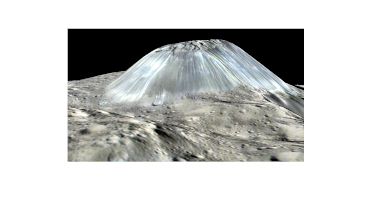- Series:Astronomy, Transcript English
Psalm 115:16
“The heaven, even the heavens, are the LORD’S: but the earth hath he given to the children of men.”
 In a previous Creation Moment, I addressed what I believe to be the mistaken view that space exploration is somehow unbiblical. I would now even put a positive spin on it. Despite their evolutionary views, the scientists of NASA frequently find information that does not fit with their deep time views, but makes more sense in a biblical context.
In a previous Creation Moment, I addressed what I believe to be the mistaken view that space exploration is somehow unbiblical. I would now even put a positive spin on it. Despite their evolutionary views, the scientists of NASA frequently find information that does not fit with their deep time views, but makes more sense in a biblical context.
In 2007, for example, NASA launched a probe called Dawn to the asteroid belt. Its principle target was the dwarf planet Ceres. It reached Ceres in 2015, having first visited Vesta.
Ceres is the largest object in the asteroid belt. It is large enough to be considered a dwarf planet and also large enough to have a spherical shape; yet, it is still tiny – only 1.28% the mass of the Moon.
According to deep-time astrophysicists, Ceres has to be very old to have developed its spherical shape. Its supposed billions of years age and its small size led a lot of scientists to the obvious conclusion that Ceres must be a solid ball of rock. So data from the Dawn mission was surprising.
Dawn revealed the existence of cryovolcanoes. Cold volatile materials – like water, ammonia and methane – exist below the surface and are heated by volcanic activity, erupting through the surface, then re-freezing. Such huge frozen plumes show that the core of Ceres must still be hot and, hence, cannot be billions of years old. We are not surprised. Observations on Ceres are completely consistent with the way God said He made this universe.
Prayer: We praise You, heavenly Father, as we learn more about the wonderful universe that You have made. Amen.
Author: Paul F. Taylor
Ref: O’Brien, J., Ceres Surprises, Creation 41(3):45, July 2019. Image: Ahuna Mons, solid cryo-plume on Ceres, artist impression, NASA, Public Domain.
© 2021 Creation Moments. All rights reserved.
